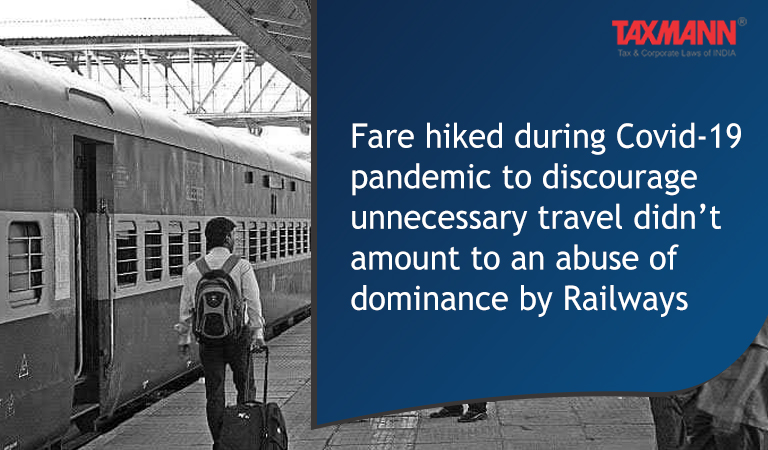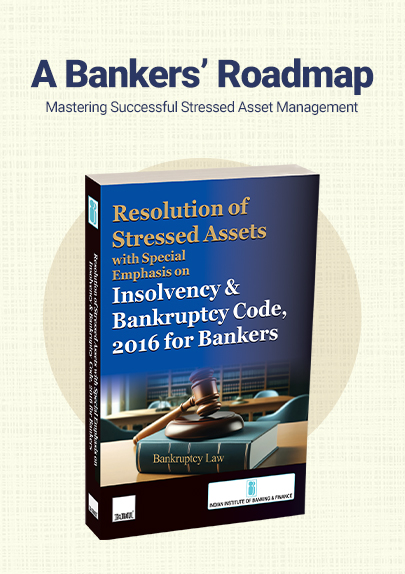Fare hiked during Covid-19 pandemic to discourage unnecessary travel didn’t amount to an abuse of dominance by Railways
- Blog|News|Competition Law|
- 2 Min Read
- By Taxmann
- |
- Last Updated on 3 December, 2021
Case details: Harshit Vijayvergia v. Indian Railways - [2021] 132 taxmann.com 224 (CCI)
Judiciary and Counsel Details
-
- Ashok Kumar Gupta, Chairperson
- Ms. Sangeeta Verma & Bhagwant Singh Bishnoi, Member
Facts of the Case
In the instant case, Informants were law students studying in NCR and were stated to be frequent users of services of Indian Railways. The informants alleged that during the COVID-19 pandemic, the Indian Railways increased ticket prices and limited operations of trains and indulged in activities that are an abuse of its dominant position under the provisions of section 4 of the Act.
Also, Indian Railways being in a dominant position in the relevant market as it has 100 percent market share had a special responsibility to not charge excessively in name of a pandemic. It has also been stated that Indian Railways has increased the fares twice under the garb of losses caused due to the pandemic.
Further, it was mentioned that the prices being charged by Indian Railways were discriminatory and has allegedly limited or restricted the operations of trains in the market and has resulted in contravention of provisions of section 4 of the Act.
Indian Railways contended that they came out with a press release, which stated that “special” trains shall now operate in the country during the pandemic, which was formerly the same trains running on identical routes under a different name.
Further, it had been clarified by Indian Railways in its press release those fares had been increased by Indian Railways to discourage people from undertaking unnecessary travel in COVID pandemic based on certain decisions of the Central Government and some State Governments.
CCI Held
The Commission observed that the Indian Railways had disclosed sufficient reasons for its actions primarily emanating from its policy decision to discourage train journeys during the pandemic. Having regard to the facts and circumstances of the case, the reasons provided by Indian Railways, and the information available in the public domain, the Commission held that it didn’t find any merit in the allegations raised by the Informants which warrants an investigation into the matter.
List of Cases Referred to
-
- Meet Shah v. Union of India [2020] 114 taxmann.com 73 (CCI) (para 12)
- Sharad Kumar Jhunjhunwala v. Union of India [2015] 62 taxmann.com 56 (CCI) (para 16).
Disclaimer: The content/information published on the website is only for general information of the user and shall not be construed as legal advice. While the Taxmann has exercised reasonable efforts to ensure the veracity of information/content published, Taxmann shall be under no liability in any manner whatsoever for incorrect information, if any.

Taxmann Publications has a dedicated in-house Research & Editorial Team. This team consists of a team of Chartered Accountants, Company Secretaries, and Lawyers. This team works under the guidance and supervision of editor-in-chief Mr Rakesh Bhargava.
The Research and Editorial Team is responsible for developing reliable and accurate content for the readers. The team follows the six-sigma approach to achieve the benchmark of zero error in its publications and research platforms. The team ensures that the following publication guidelines are thoroughly followed while developing the content:
- The statutory material is obtained only from the authorized and reliable sources
- All the latest developments in the judicial and legislative fields are covered
- Prepare the analytical write-ups on current, controversial, and important issues to help the readers to understand the concept and its implications
- Every content published by Taxmann is complete, accurate and lucid
- All evidence-based statements are supported with proper reference to Section, Circular No., Notification No. or citations
- The golden rules of grammar, style and consistency are thoroughly followed
- Font and size that’s easy to read and remain consistent across all imprint and digital publications are applied






 CA | CS | CMA
CA | CS | CMA


